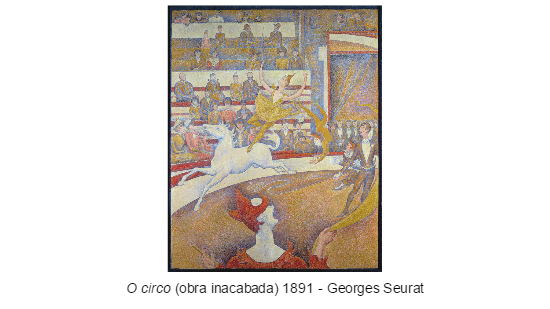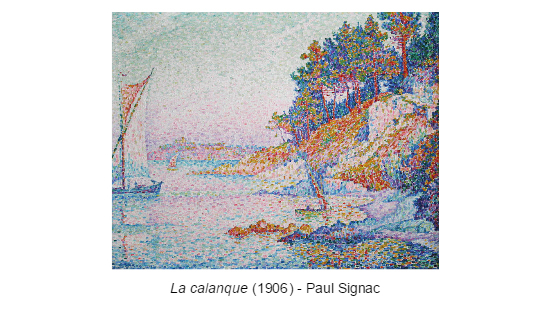Pointillism is a technique of drawing and painting, where the artist uses small spots and dots to form the images.
The technique of pointillism emerged within the scope of Impressionism - an artistic movement that reached its peak in the late 19th century - developed by French painters Georges Seurat (1859 – 1891) and Paul Signac (1863 – 1935). Some scholars of art history consider pointillism a reaction to Impressionism, classifying itself as a movement post-impressionist.
Learn more about Impressionism.
Also known as Divisionism, Chromoluminarism, Neo-Impressionism and Dot Painting, pointillism was based on the principle of totality. contempt for the line, as a way of delimiting the portrayed nature. Artists who used this technique gave greater importance to the “mathematical” use of colors, arranged in the work in juxtaposition and not through blending.
Unlike classical painting techniques, with pointillism there is no mixing of primary colors to create new tones, nor the use of lines to form the lines of the drawings.
Inspired by the scientific work of Michel Chevreul (1786 – 1889), entitled "The Law of Simultaneous Color Contrast" (1839), artists who used pointillism as a technique believed in the formation of new tones in their works through the juxtaposed use of colors primaries and the different distances between each point and the other, thus forming, from the perspective of the observer, the impression that there is a complete figure and not fragmented.
In Brazil, among some of the artists who stood out for using the technique of pointillism in their works, especially during the period of the First Republic (1889 – 1930), are: Belmiro de Almeida (1858 – 1935), Eliseu Visconti (1866 – 1944), Rodolfo Chambelland (1879 – 1967), Guttmann Bicho (1888 – 1955) and Artur Timóteo da Costa (1882 – 1922).
From the 1950s onwards, the movement of pop art "rescued" the technique of pointillism, which has been applied in several works by Andy Warhol and Roy Lichtenstein, principally. The latter, however, applied a sub-technique of pointillism that he called “Ben-day dots”.
See also: meaning of Modern Art.
pointillism images



In the field of psychology, pointillism is interpreted as a type of perception of reality, where the individual only perceives a certain event as a part, without having a relationship with the whole.
More extensively, pointillism can still mean the act of approaching a certain subject in a fragmented way, by points or topics, without being globally.



